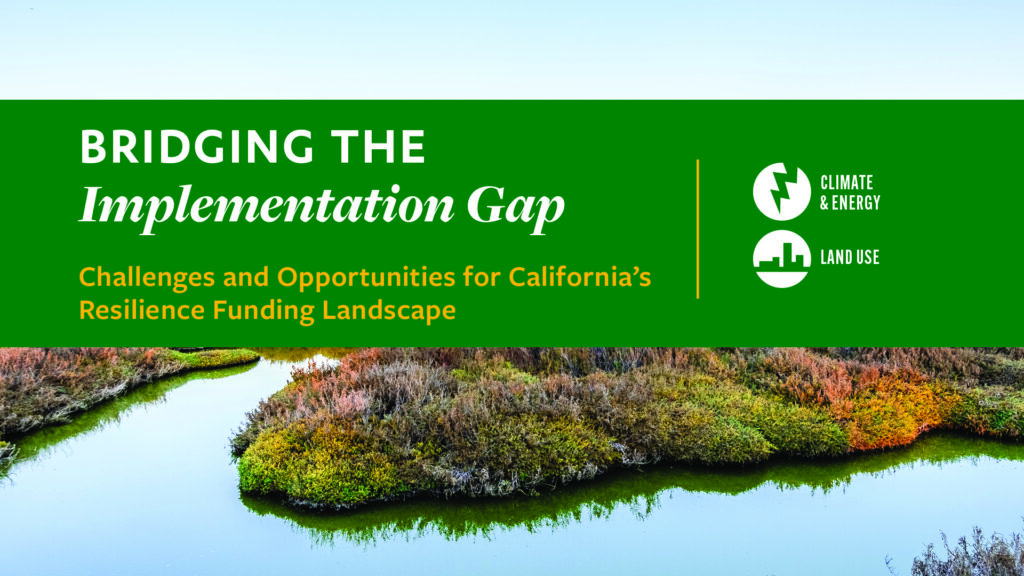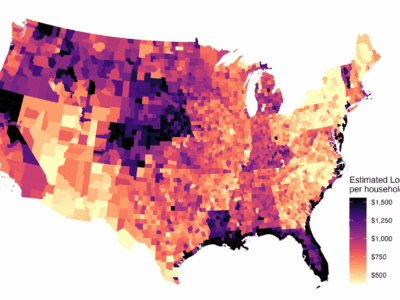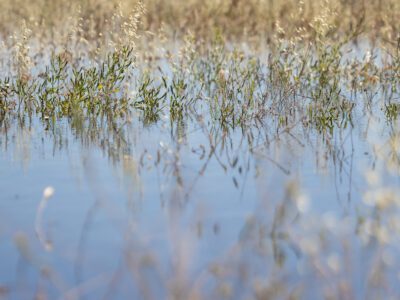Is California’s Climate Resilience Funding Ready for the Future?
New CLEE Report Identifies Key Challenges and Opportunities in the State’s Adaptation Funding Landscape
As climate change accelerates, California faces increasingly severe threats to its communities, economy, and environment. Rising temperatures, prolonged droughts, sea-level rise, and worsening wildfires are among the risks stretching State and local resources and driving demand for adaptation funding. California has utilized its longstanding leadership in climate policy to confront these challenges, including developing the State Climate Adaptation Strategy, establishing the Integrated Climate Adaptation and Resilience Program (ICARP) to coordinate action across state, local, and regional government, and funding a suite of statewide investment programs in adaptation and resilience. However, an implementation gap remains between ICARP’s vision for a resilient California and the resources available to achieve the State’s priorities.
To address the growing risks of climate change, California has developed a comprehensive adaptation and resilience framework. This framework is anchored by the California Climate Adaptation Strategy and supported by programs such as the Integrated Climate Adaptation and Resilience Program (ICARP), housed within the Governor’s Office of Land Use and Climate Innovation (LCI). These initiatives are designed to empower local governments and communities with the tools and funding necessary to build long-term climate resilience. At the heart of this approach is a commitment to community-driven, multi-benefit strategies that ensure climate solutions not only reduce risks but also provide economic, social, and environmental benefits.
In early 2024, the Center for Law, Energy & the Environment (CLEE) at UC Berkeley released evaluations of two state grant programs—the Adaptation Planning Grant Program (APGP) and the Regional Resilience Planning and Implementation Grant Program (RRGP). Both programs received multi year funding in the 2022 Climate Budget and each awarded its first round of grants in 2023. The evaluations found that both programs made strong additions to California’s funding portfolio, providing essential resources to support local climate adaptation planning and implementation. However, the 2024 State budget eliminated funding for both programs as part of the State’s plan to address budget deficits. The withdrawal of funds exposed structural challenges in California’s resilience funding landscape.
CLEE’s latest report, Bridging the Implementation Gap: Challenges and Opportunities for California’s Resilience Funding Landscape, outlines three key challenges facing the funding landscape, which impact the State’s ability to support effective and equitable climate adaptation strategies: oversubscription, instability, and complexity. This makes it difficult for communities, especially those with fewer resources, to access funding needed to undertake adaptation planning and project implementation.
Through interviews with APGP and RRGP grantees, a review of policy-facing literature on adaptation, and assessment of the climate adaptation funding landscape, we found that navigation of funding opportunities is a significant challenge for applicants, particularly local governments. Many find that the State’s adaptation funding processes–which often involve multiple agencies, different eligibility criteria, and distinct application requirements–are burdensome and inconsistent. This complexity can be overwhelming for smaller jurisdictions and underserved communities, further exacerbating existing disparities in climate preparedness.
However, the challenges facing California’s adaptation funding landscape also present opportunities for the State to refine its approach. The report outlines several recommendations for how State grant program administrators and policymakers can strengthen the funding landscape to ensure that resources reach impacted communities:
- Maximize the Resilience Outcomes of Existing Funding Programs: California’s strong position in climate action offers State grant program administrators opportunities to improve funding. The report advises program administrators to facilitate the alignment of adaptation plans across different government levels and sectors while promoting local governance in adaptation strategies. This approach aims to optimize equitable resilience outcomes from current State funding programs.
- Make Adaptation and Resilience Funding More Accessible: State policymakers can promote fairer funding distribution by ensuring that State funding programs are available to applicants with fewer resources. The report suggests that the State should establish a centralized grant support hub to help applicants navigate the adaptation funding landscape and create funding opportunities that align with Federal, private, and nonprofit sources to enhance stability.
Perhaps the report’s most urgent recommendation is that the California Legislature and Governor’s Office develop a long-term, comprehensive funding and investment strategy for climate adaptation. This strategy should outline pathways to achieve sustained, predictable funding for adaptation and resilience that align with the goals of the California Climate Adaptation Strategy. A comprehensive funding strategy will help ensure that adaptation and resilience efforts are not only maintained but also expanded in response to growing climate threats. By securing stable funding and planning in advance for budget fluctuations, the State can avoid the boom-and-bust cycles that have impeded long-term planning and implementation efforts in the past.
CLEE’s report highlights the critical gaps in California’s adaptation funding landscape and offers concrete recommendations for strengthening the State’s capacity to support equitable, community-driven climate resilience efforts. By addressing these funding challenges, California has the opportunity to lead the way in creating a future that is sustainable and more just, protecting its people and economy from the impacts of a changing climate.
Hanna Payne, Kasia Dahlbeck and Louise Bedsworth contributed to this post. Access the full report here: Bridging the Implementation Gap: Challenges and Opportunities for California’s Resilience Funding Landscape








Reader Comments